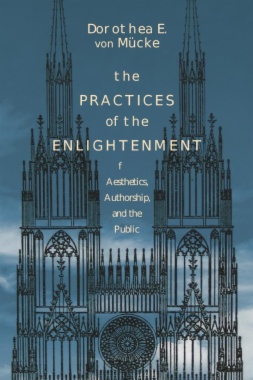Rethinking the relationship between eighteenth-century Pietist traditions and Enlightenment thought and practice, The Practices of Enlightenment unravels the complex and often neglected religious origins of modern secular discourse. Mapping surprising routes of exchange between the religious and aesthetic writings of the period and recentering concerns of authorship and audience, this book revitalizes scholarship on the Enlightenment.
By engaging with three critical categories—aesthetics, authorship, and the public sphere—The Practices of Enlightenment illuminates the relationship between religious and aesthetic modes of reflective contemplation, autobiography and the hermeneutics of the self, and the discursive creation of the public sphere. Focusing largely on German intellectual life, this critical engagement also extends to France through Rousseau and to England through Shaftesbury. Rereading canonical works and lesser-known texts by Goethe, Lessing, and Herder, the book challenges common narratives recounting the rise of empiricist philosophy, the idea of the "sensible" individual, and the notion of the modern author as celebrity, bringing new perspective to the Enlightenment concepts of instinct, drive, genius, and the public sphere.
- Table of Contents
- Acknowledgments
- Introduction
- Part One. The Birth of Aesthetics, the Ends of Teleology, and the Rise of Genius
- 1. The Surprising Origins of Enlightenment Aesthetics
- 2. Disinterested Interest: The Human Animal’s Lack of Instinct
- 3. Beautiful, not Intelligent Design
- 4. Enlightenment Discourses on Original Genius
- 5. “Where Nature Gives the Rule to Art”
- 6. The Strasbourg Cathedral: Edification and Theophany
- Conclusion
- Part Two. Confessional Discourse, Autobiography, and Authorship
- 7. Pietism
- 8. Rousseau
- 9. Goethe: From the “Confessions of a Beautiful Soul” to Poetry and Truth
- Part Three. Imagined Communities and the Mobilization of a Critical Public
- 10. Patriotic Invocations of the Public
- 11. Real and Virtual Audiences in Herder’s Concept of the Modern Public
- 12. Mobilizing a Critical Public
- Notes
- Index

